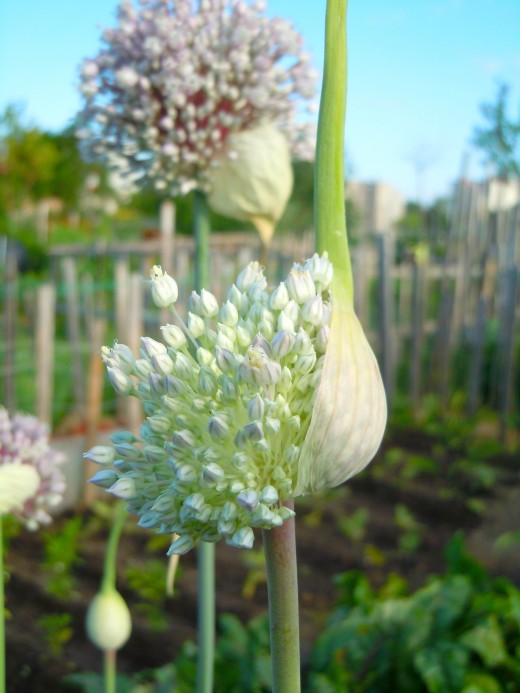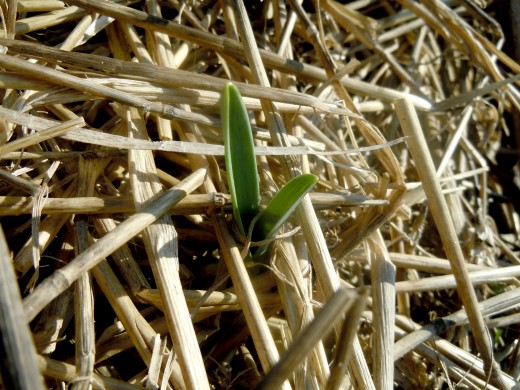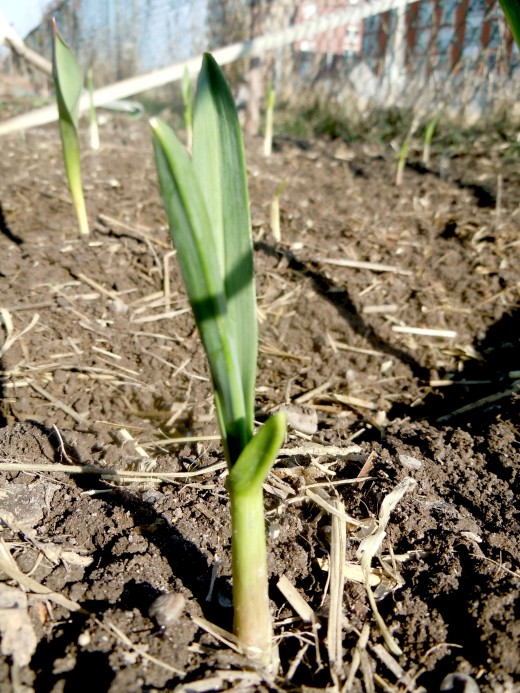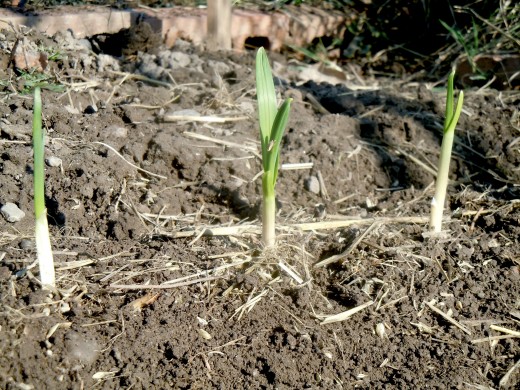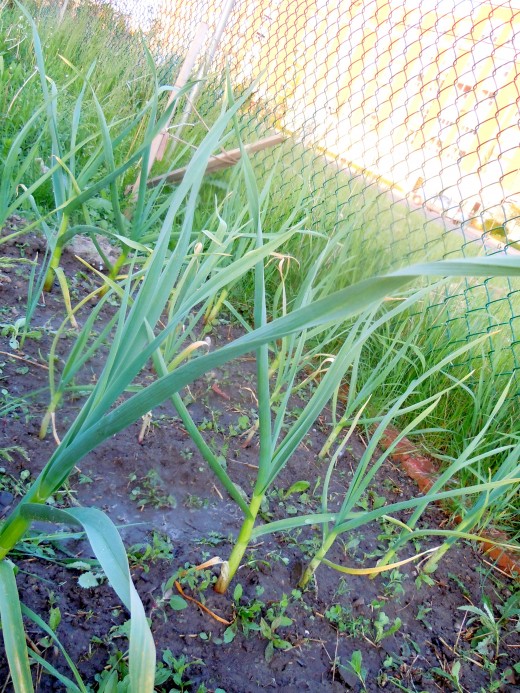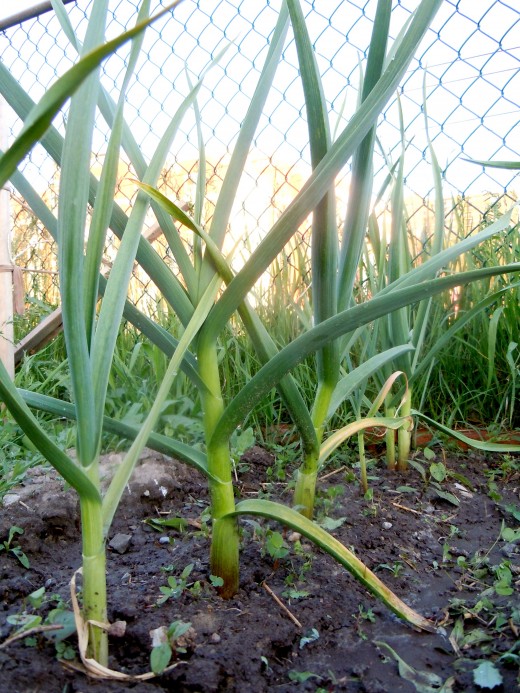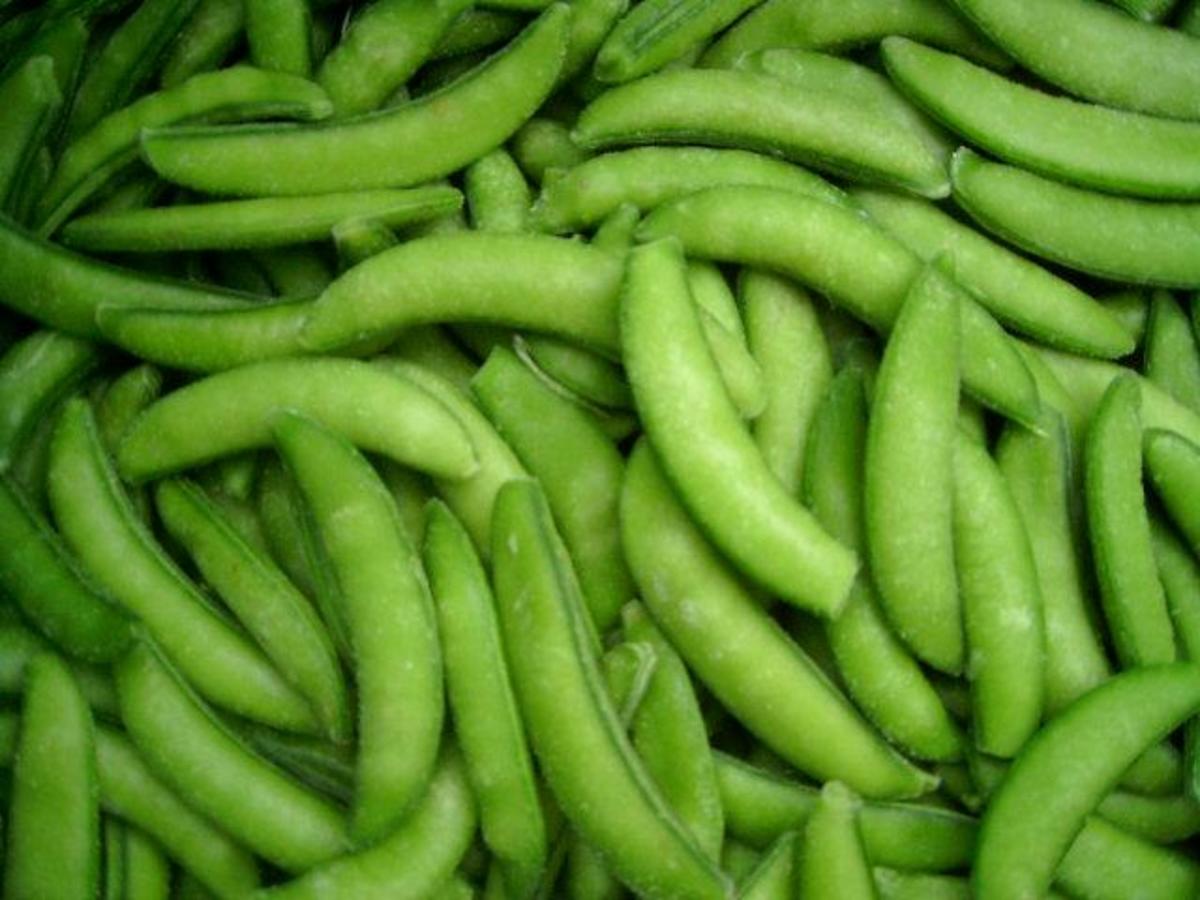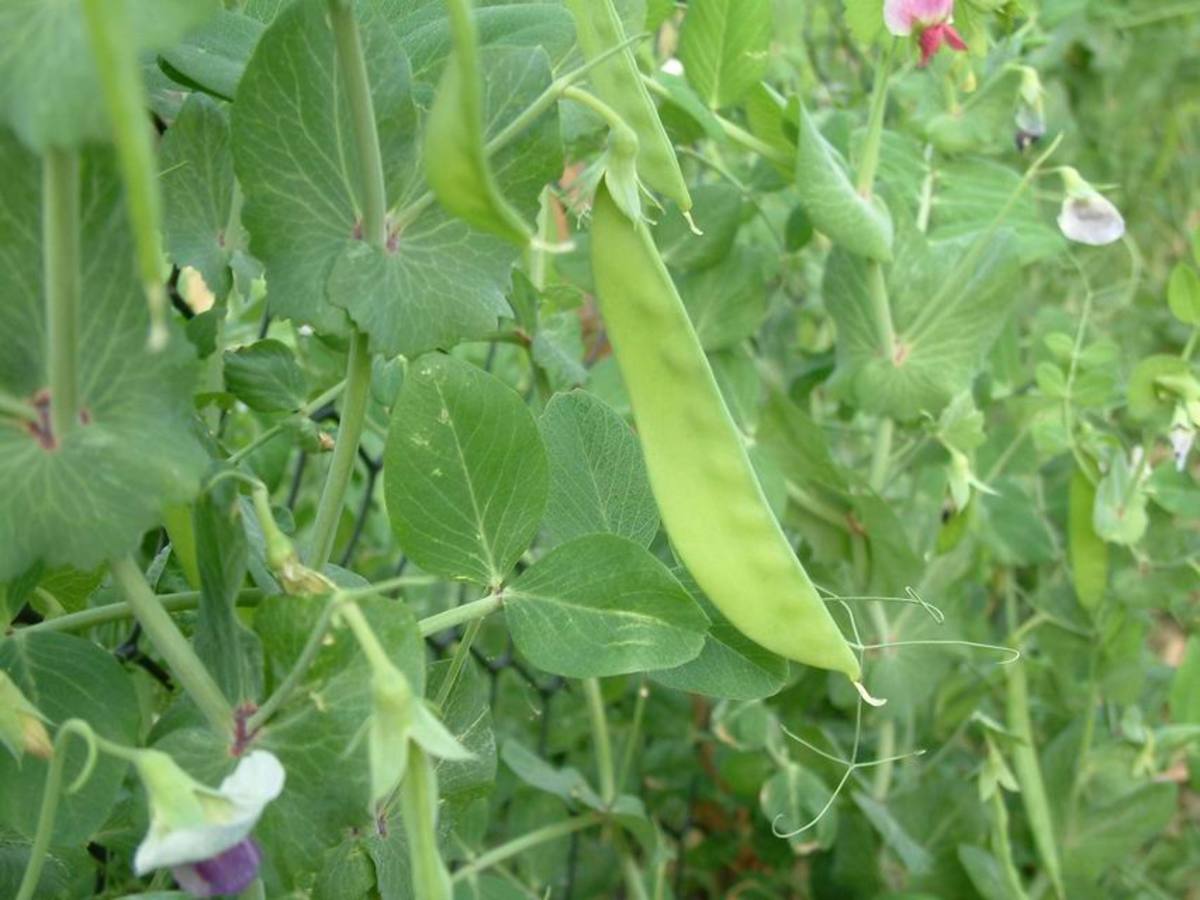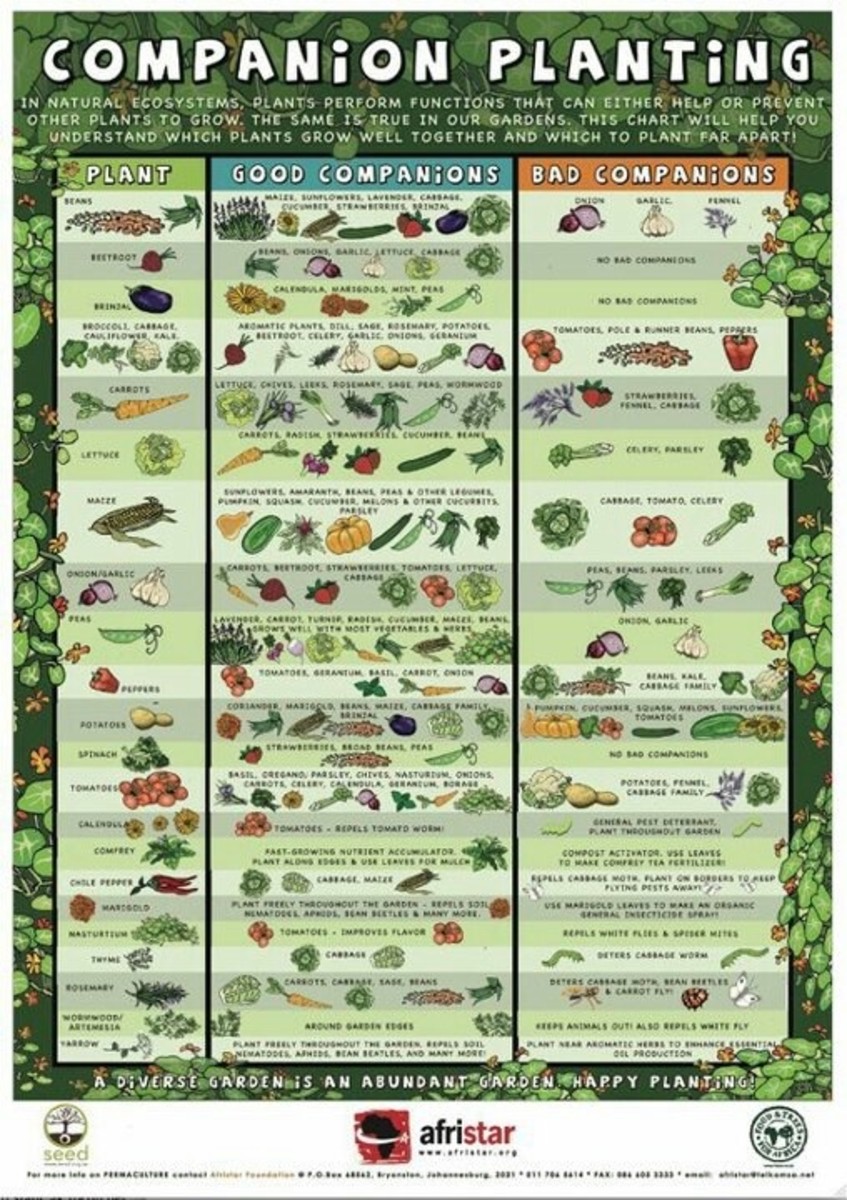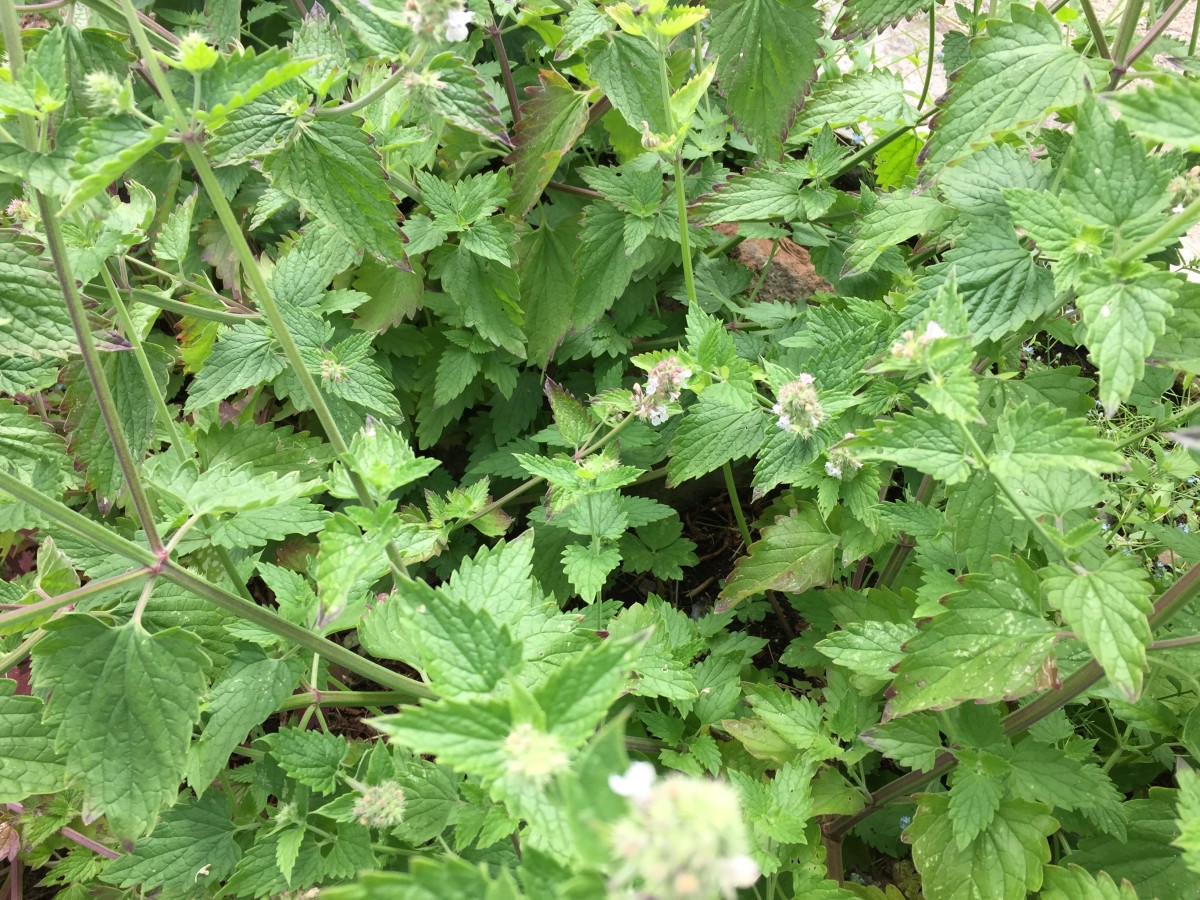The Life of Garlic
TAGG "The Always Growing Garden" founder Dennis Drum
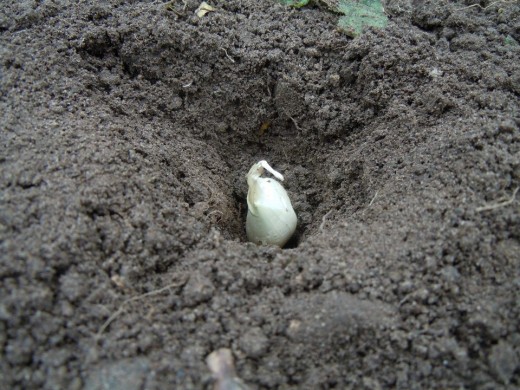
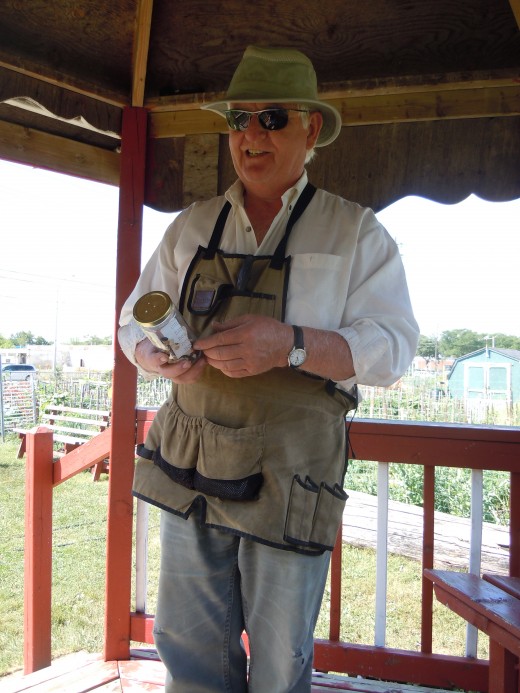
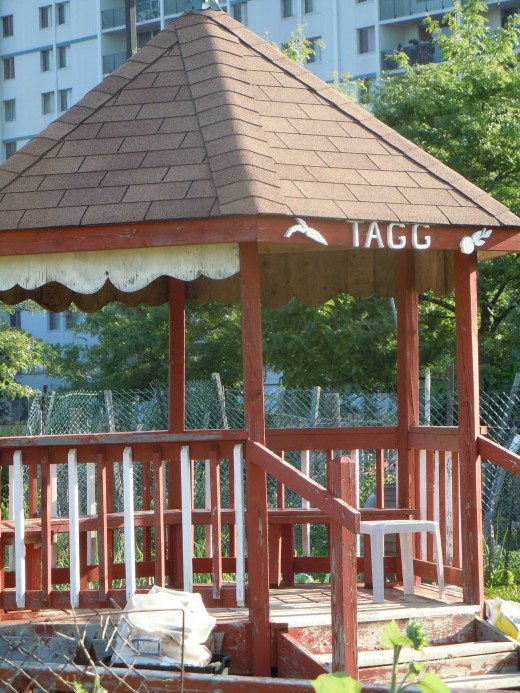
Springing garlic shoots a welcome cry that spring is here.
After the long winter months and the garlic we had planted last fall (a good time to plant garlic like in a colder climate) is now springing for spring. Garlic however does not survive even if thin snow is covering the ground when temperatures are very cold. But why did we plant them soon after the beginning of frost?
It is possible to plant garlic considering late September and between mid-October and late November. You will need layers of straw to protect the garlic bulbs beneath the ground. The layers of straw will keep the snow from damaging the garlic bulbs, hindering its growth. Frozen ground will kill them.
One day, Ben (who has an avid love for gardening) happened to pass by the area and was astonished of what he saw. He was more keen and enthusiastic about having a garden than me (I do not have the green thumb like my parents who are die-hard about gardening.) So, he went back there to check it closer. A small membership fee of $25 for the whole year was worth it. The gardeners from different walks of life achieved tremendous awe-inspiring healthy gardens. The vegetable gardens bursting of green, red, purple and yellow organics brought charisma to what we could also possibly have beneath our skillful hands. There was no need of a moment’s persuasion. First thing in the morning, we went there to meet Dennis Drum, 'The Man' behind TAGG "The Always Growing Garden" on east of Eglington and a farmer himself. He toured us around and gave his motivating tips including a bonus of a variety of seeds to start with. Wow, he was just amazing, kind and supportive to new gardeners like us. We started only late last year since we were new residents around the area. It is never too late, we agreed. "You can start right away.", he said.
We learnt a handful of interesting advice from Dennis. It is an admirable thing that he came up with finding a lot, fought hard-earned efforts to keep it and successfully gotten the community to enjoy planting, toiling and harvesting. I thought, what a productive way to merely half an hour spent dropping at the garden after a day’s work! We made new friends, an Indian couple shared some harvested onions and banana peppers, Dennis re-planted marigolds in our space to keep the bugs away, Michelle planted some cherry tomato plants for us (when we were not around), an older man watered his plants every afternoon in his suit, a man who gave us his helpful tips, a young guy proud to share about his double work and stories of the roses and daisies he had grown, Dennis pointed out a sweet fruit bearing raspberry tree in the middle for anyone to pick, I played with my camera and took pictures of bugs and plants, and the most rewarding part is being delighted to harvest a bagful of fresh red and green organics for dinner!
Earlier this March, we went to the community garden eager to find out if the garlic cloves we had planted last fall had given signs of life. We were quite excited to take a peek. And ecstatic we were to see a new green shoot had emerged. I had to take a picture! We did not lift the rest of the straw to see how many more shoots had sprouted during the winter. That, we will keep very soon for a later surprise when the chill has cleared the air and spring has officially taken over. ≈♥≈
Growing Garlic
Click thumbnail to view full-size





What we are missing about Growing Garlic
If this is your first time to plant garlic, just like us, I tell you it is plain easy.
Choosing the Right Bulbs
Dennis handed us a small plastic bag with different sizes of garlic bulbs and cloves. “Better sized bulbs will give you the best garlic results”, he said. Bigger cloves, bigger bulbs!
I did a handful of research and reading and here is what I can share in this hub.
There are two types of garlic:
Softneck Garlic is abundant in supermarkets and is easier to grow. Softnecks have pale and papery-feel to its skin. The centre of the bulb has multiple layers of cloves in different sizes and it is easy to separate them. The stems are flexible. If you would like hanging garlic in your kitchen, these softnecks are best for braiding. There are two types of softneck garlic: silverskin and artichoke. Silverskin garlic is easier to grow and has a longer shelf life. Artichoke garlic has a coarser or thicker skin around it with light purple streaks, some looking like blotches. The cloves are fewer but larger in size than silverskin.
Hardneck Garlic has less garlic cloves than the softneck. The hardneck bulb almost has no skin at all as protection and is more prone to a shorter shelf life. The stems are stiff for the hardnecks which is advisable for winter zones planting. These erect leaves grow up to 150 cm tall and hollow like wild chives. The real stem is short at the bottom of the plant. The inner part of the stem of the garlic plant grows to 150 cm curving at the top like a hook and is called a scape. Scapes are good for eating as well, but scapes only grow from a hardneck garlic variety. Normally, a batch of small bulbs is produced on top of a scape, called bulbils (mini cloves). Also commonly known as ‘garlic flower’.
Popular hardneck varieties include: porcelain, purple stripe and rocambole. Porcelain garlic got its name from its satin-like wrap and has the least cloves. Porcelain garlic is commonly mistaken as elephant garlic*. Purple stripe garlic is obvious by its purple markings. Rocambole is a garlic of brown coloured cloves counting mostly to a dozen. Now, we start to know better which garlic we are purchasing in the market.
*Elephant garlic is large, growing into a bulb like the size of an onion hence, its name. It is closely related to leeks as leek is to onions. It does not however maintain its growth as a large bulb but alternates its formation every year into a bulb with several smaller cloves. We tend to get attracted to elephant garlic on the market racks as to its size not knowledgeable enough that its flavour is less intense, but rather sweet. Like I would grab the large one too; it is better to chop at. If you prefer a faint and less garlicky taste, this elephant garlic is a choice for you. ≈♥≈
Planting garlic cloves.
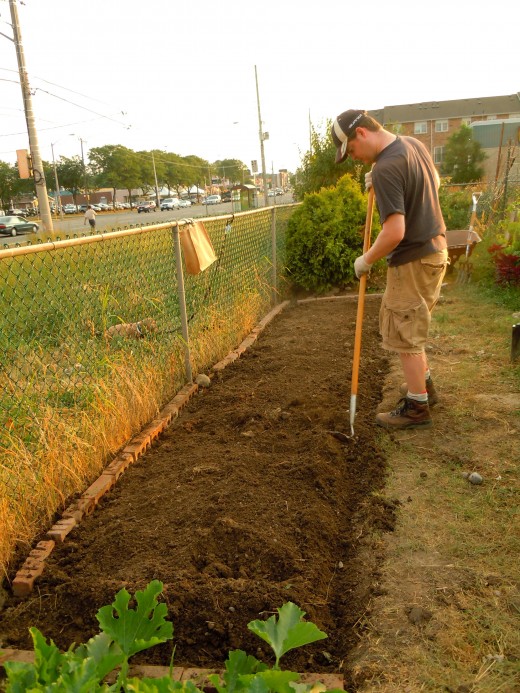
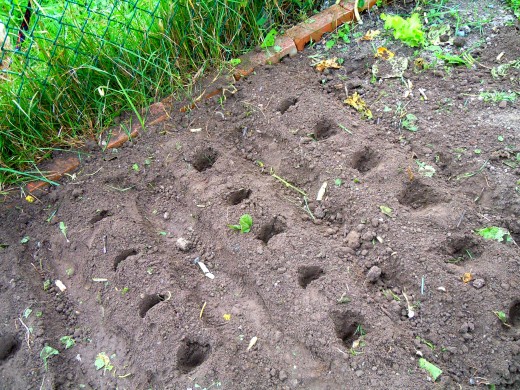
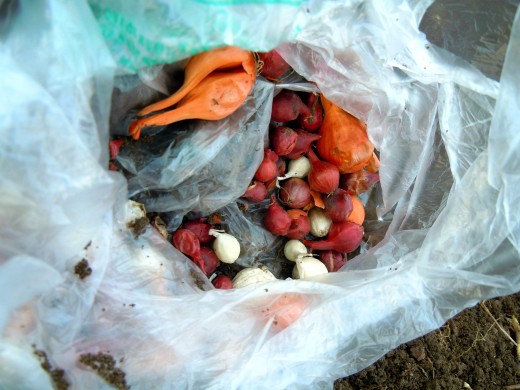
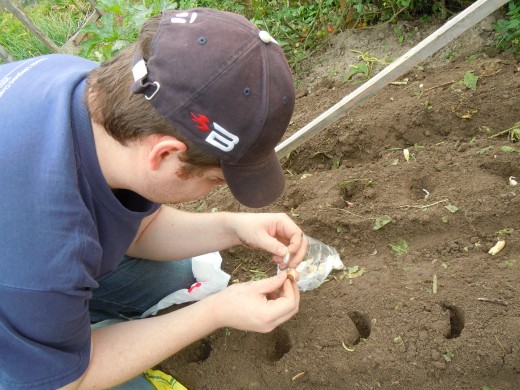
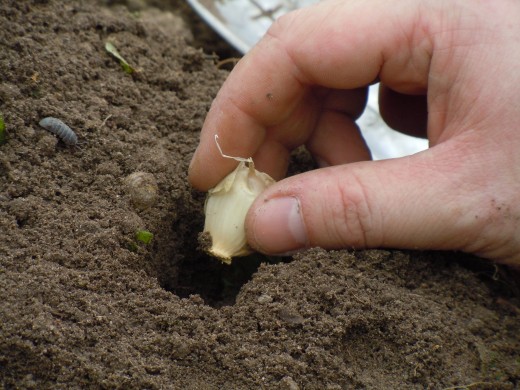
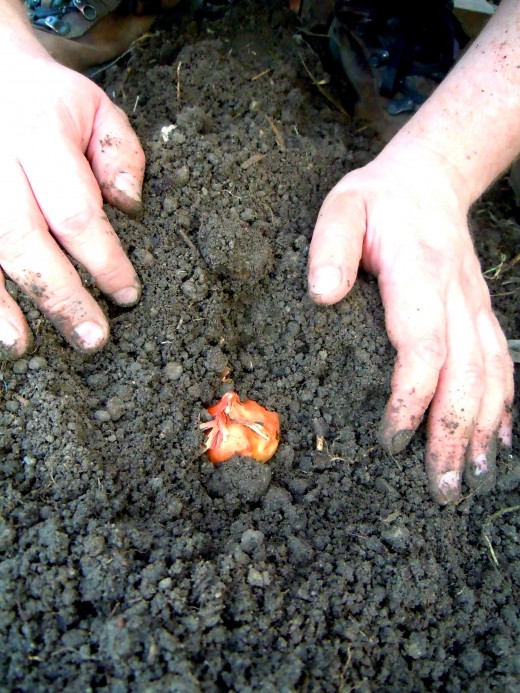
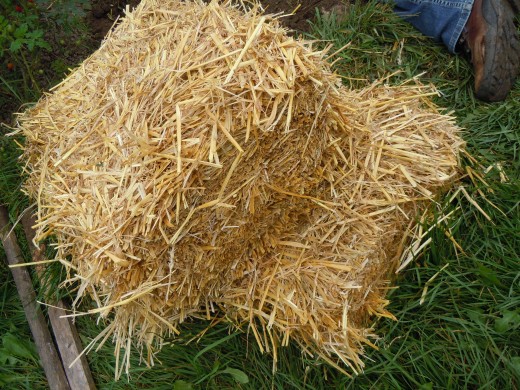
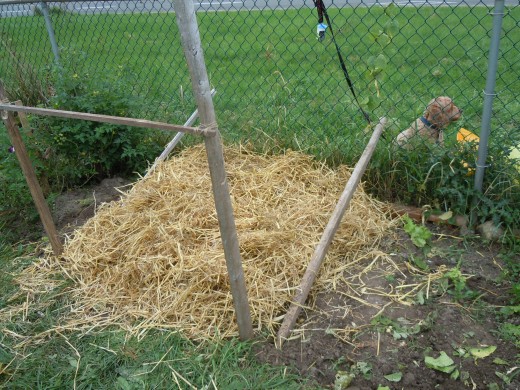
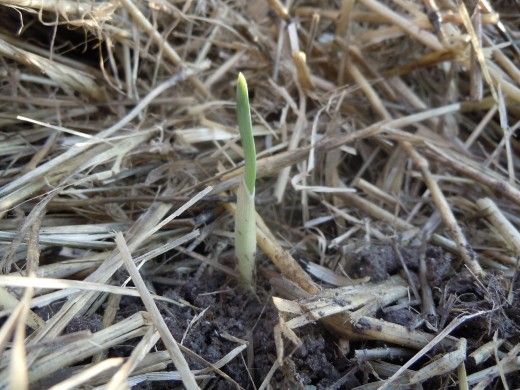
Ready to Plant Garlic?
Spring time is the right time to plant garlic in places with a warmer climate. Yet in the tropical countries, they only have the dry and wet seasons where producing garlic is more difficult than that of onions. There is a need for low temperature which could be properly enhanced under best conditions on elevated lands. Thus however, bulbs do not grow largely in size in the tropics. Where winter is, spring follows and is the time to see the garlic shoots shooting out from the moist ground. By July, you are ready to harvest and bring home some garlic!
How to Plant Garlic
1) Separate cloves before planting.
2) In mid-fall season, plant garlic in a fertilized soil. Cultivate to loosen soil before planting the cloves. Cloves must be planted two inches deep and 6-8 inches apart from the next clove. Cover and water.
3) Dig along the side to make drainage. This drainage will prevent the garlic from rotting in excess water conditions (like heavy downpour).
4) Once the bed is all set, you may need 6-12 inches of straw to cover, protect and just give the right amount of moist for the cloves during winter.
5) The straw is then removed after the last visit of winter. Spring is here! This is when shoots are pointing towards the sky and you are smiling at your new organic babies!
You may leave them unharvest if you wish to grow the scapes and bulbils. Some gardeners prefer planting garlic for its purpose of producing pretty flowers.
How to take Care of Your Babies
Garlic responds if being well fed. Feed with fertilizer once or twice each month starting in late March. Garlic hates weeds, so it is best to keep its surroundings weed free. Watering your garlic garden is essential in dryer conditions. Watch them grow and we’ll be watching ours.
Finally, Harvest Time
To identify if the garlic is ready for harvesting is when the parts of the foliage has turned brown. Harvest time is around July or mid-August. Dennis noted that to harvest early, the bulbs will be small; if you wait long enough to harvest, the bulbs have already split. Hoping for a dry summer when garlic is healthy from diseases. Diseases occur if garlic is exposed to a prolonged wet ground during wet summers though the chive-looking leaves have turned brown. Be gentle in harvesting your garlic, bruising will shorten garlic quality.
Once you have your own organic garlic, you will hate buying them again.
For beginners and a better understanding about garlic
- Growing Garlic, Harvesting Garlic, Planting Garlic, Garlic Scapes
Tips on growing garlic - soil preparation, green manure, when to plant, planting, removing the garlic scapes, bulbils, watering, havesting, managing pests and diseases.

